Related Research Articles
Homicide: Life on the Street is an American police drama television series chronicling the work of a fictional version of the Baltimore Police Department's Homicide Unit. Created by Paul Attanasio, it ran for seven seasons and 122 episodes on NBC from January 31, 1993, to May 21, 1999, and was succeeded by Homicide: The Movie (2000), which served as the series finale. The series was created by Paul Attanasio and based on David Simon's book Homicide: A Year on the Killing Streets (1991). Many of the characters and stories used throughout the show were based on events depicted in the book.
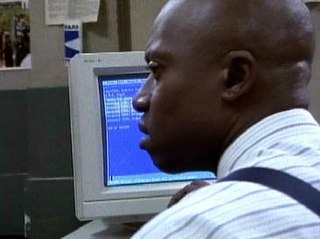
Francis Xavier "Frank" Pembleton is a fictional homicide detective on the television drama series Homicide: Life on the Street portrayed by Emmy Award–winning actor Andre Braugher. He is a primary character of the show through the first six seasons. Although the show featured an ensemble cast, Pembleton would become the fan favorite and is often identified by as the show's signature character. He is based on Baltimore Police Department Detective Harry Edgerton, who, like Pembleton, was an eccentric New York–born African American detective in the BPD homicide unit featured in David Simon's book Homicide: A Year on the Killing Streets. The character also appeared in the Law & Order episode "Charm City".
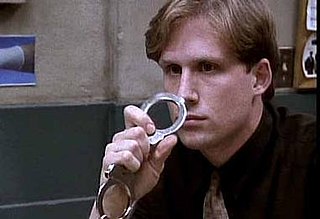
Detective Michael Scott Kellerman is a fictional character on the television drama series Homicide: Life on the Street portrayed by Reed Diamond. He is a main character from seasons 4–6 (1995–98).
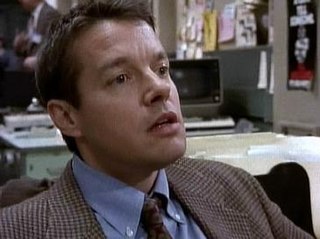
Timothy Bayliss is a fictional character on Homicide: Life on the Street, played by Kyle Secor and one of the few main characters to last the entire run of the show. He was loosely based on real-life Baltimore homicide detective Thomas Pellegrini, featured in David Simon's book Homicide: A Year on the Killing Streets, though Pellegrini was reportedly not at all a fan of his fictional alter ego. The character also appeared in the Law & Order episode "Charm City."

Meldrick Lewis is a fictional character on the television series Homicide: Life on the Street, played by Clark Johnson. The character is loosely based on Baltimore detective Donald Waltemeyer and appeared in the series for its entire run. Lewis had the very first and last lines of the series.

Terri Stivers is a fictional character in Homicide: Life on the Street. She was played by actress Toni Lewis.
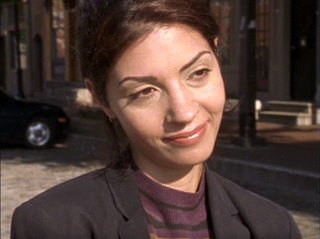
Laura Ballard is a fictional character in Homicide: Life on the Street, played by Callie Thorne. She is a police detective in the homicide division of the Baltimore Police Department.
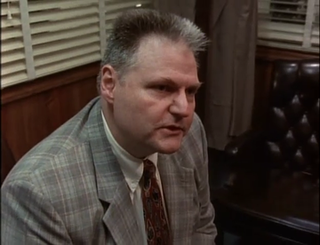
Roger Gaffney is a fictional police officer of the Baltimore Police Department on Homicide: Life on the Street. He was played by Walt MacPherson.

J.H. Brodie is a fictional character in the television series Homicide: Life on the Street. He appeared in a recurring role in the show's fourth season and was a regular in the show's fifth season, after becoming an official crime scene videographer.

Stuart Gharty is a fictional character played by Peter Gerety in the television series Homicide: Life on the Street.

The fourth season of Homicide: Life on the Street aired in the United States on the NBC television network from October 20, 1995 to May 17, 1996 and contained 22 episodes.

Rene Sheppard is a fictional character in Homicide: Life on the Street, played by Michael Michele.
"Blood Ties" is the three-episode sixth season premiere of the American police drama television series Homicide: Life on the Street. The episodes constitute the 78th, 79th and 80th overall episodes of the series. They originally aired on NBC on October 17, 24 and 31, 1997, respectively.
"Law & Disorder" is the 15th episode of the third season of the American police drama television series Homicide: Life on the Street. It originally aired on NBC on February 24, 1995. The episode was written by Bonnie Mark and Julie Martin and directed by John McNaughton. The episode concludes elements of a storyline about the shooting of Beau Felton, Kay Howard, and Stanley Bolander.
"Finnegan's Wake" is the 21st episode of the sixth season of the American police drama television series Homicide: Life on the Street. It is the 98th overall episodes of the series, and originally aired on NBC in the United States on April 24, 1998.

Paul Falsone is a fictional character in Homicide: Life on the Street, portrayed by Jon Seda. He is a police detective of the Baltimore Police Department. Born on October 14, 1968, Falsone was introduced as a long-time member of the Auto Squad at the end of Season 5, where his natural talents proved useful in solving vehicle-related crimes. However, when the department began a rotation program, in which detectives would be periodically reassigned to new units, Falsone was transferred to the homicide shift commanded by Al Giardello. After three months, Giardello expressed satisfaction with Falsone's work and requested that he remain with the unit.
"Zen and the Art of Murder" is an episode of the seventh season of the American police drama television series Homicide: Life on the Street. It originally aired on NBC on April 2, 1999. The episode was written by Lloyd Rose and directed by Miguel Arteta. The episode is significant in the story arc of Laura Ballard's romance with Paul Falsone; fearful that their secret romance will be discovered, Falsone ends the relationship.
"Self Defense" is an episode of the seventh season of the American police drama television series Homicide: Life on the Street. It originally aired on NBC on April 9, 1999. The episode was directed by Barbara Kopple and written by cast member Yaphet Kotto, who also plays Lt. Al Giardello. The episode is significant in story arcs regarding the romance between detectives Laura Ballard and Paul Falsone and Lt. Giardello's continued difficulties in his attempts to get promoted to a captaincy.
"Fire" is the season premiere of the fourth season of the American police drama television series Homicide: Life on the Street. It originally aired on NBC on October 20, 1995. The episode was written by Julie Martin and was directed by Tim Hunter. The two-part story centres on Pembleton and Bayliss' investigation into a pair of arson-related homicides, and introduces a new regular character, Arson Squad detective Mike Kellerman, who subsequently transfers to Homicide and partners with Det. Meldrick Lewis. This episode also flagged the permanent departure of regular characters Stanley Bolander and Beau Felton.
"Fire " is the second, concluding part of the two-part season premiere of the fourth season of the American police drama television series Homicide: Life on the Street. It originally aired on NBC on October 27, 1995. Both parts were written by Julie Martin ; Part 1 was directed by Tim Hunter, and Part 2 by Nick Gomez. This episode concludes the investigation of a pair of arson-related homicides, led by detectives Pembleton and Bayliss, with their Arson Squad colleague Det. Mike Kellerman.
References
1. Kalat, David P. (1998). Homicide: Life on the Street: The Unofficial Companion. Los Angeles, California: Renaissance Books. ISBN 1-58063-021-9.
2. Bigelow, Kathryn. (2006). Homicide Life on the Street - Season 6 (episode "Fallen Heroes"). [DVD]. A&E Home Video.